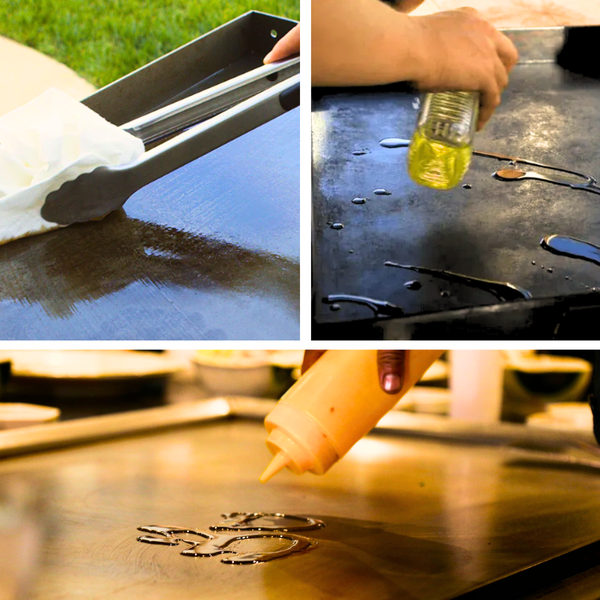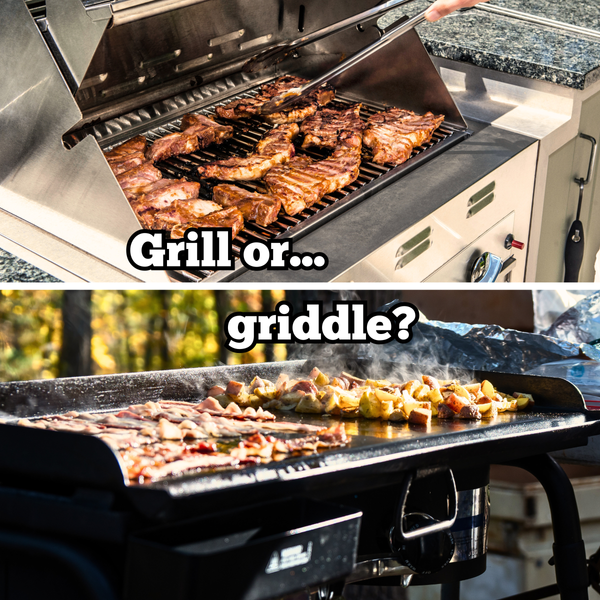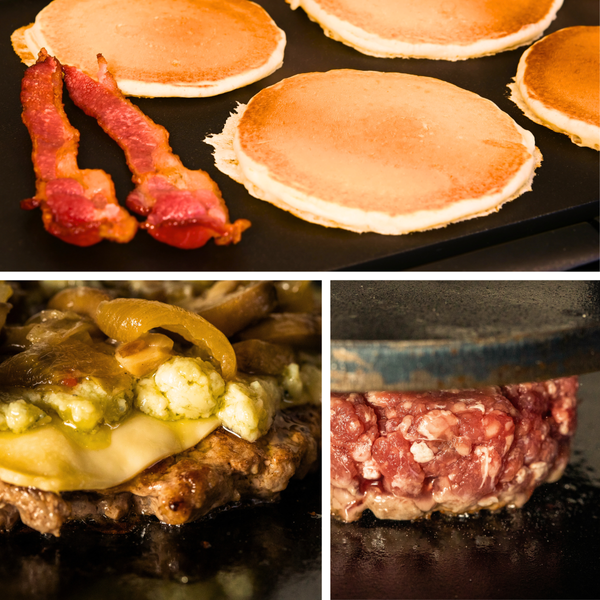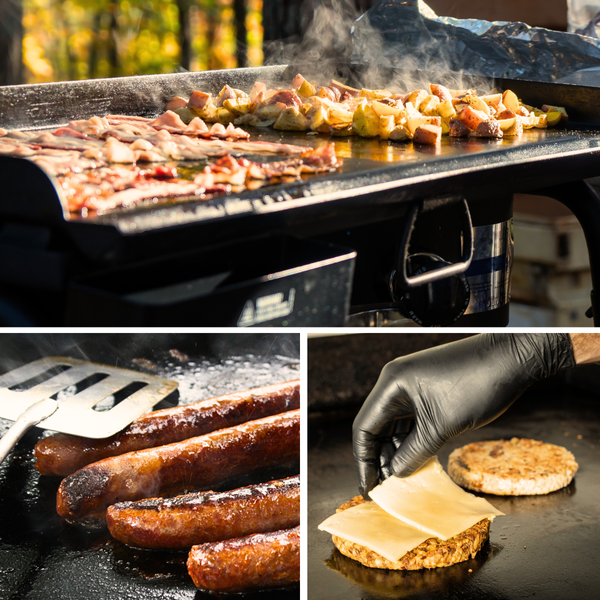Smoking meats is an art form that has been perfected over generations, creating succulent, smoky flavors that are hard to replicate with any other cooking method. Whether you're a seasoned pitmaster or a novice looking to delve into the world of low and slow cooking, understanding the nuances of smoking meat is crucial to achieving that perfect taste and texture. One question that often arises is: can you put too much meat in a smoker? Let's explore this topic in depth.
Key Takeaways:
- Understanding the capacity of your smoker is crucial to avoid overcrowding and ensure even smoking.
- Proper airflow and maintaining the desired temperature are key factors in achieving the perfect smoke.
- Knowing the different cuts of meat and their smoking requirements can prevent common smoking mistakes.
The Basics of Smoking Meat
Smoking meat is a process that involves cooking food slowly over low heat, with the addition of wood smoke for flavor. This method not only imparts a unique smoky flavor but also tenderizes tougher cuts of meat. The smoking process can vary greatly depending on the type of meat, the smoker used, and personal preferences.
Choosing the Right Smoker
There are various types of smokers available, from traditional charcoal grills to modern pellet smokers. Each type has its own set of advantages and can affect the entire process of smoking meat. When selecting a smoker, consider factors like size, fuel type, and the level of control it offers over the cooking temperature.
Understanding Smoker Capacity
Before you start smoking, it's essential to know the capacity of your smoker. Overloading it with too much meat can lead to uneven cooking and a lack of smoky flavor. Each piece of meat needs enough space for the smoke to circulate and for the heat to be distributed evenly.
The Importance of Airflow
Airflow is a critical component of the smoking process. Too much meat in the smoker can obstruct airflow, leading to an inconsistent cooking environment. This can result in parts of the meat not reaching the desired internal temperature or becoming over-smoked.
Managing the Temperature
Maintaining a consistent air temperature is vital for smoking meat. Overcrowding the smoker can cause fluctuations in temperature, making it difficult to achieve the target temperature for each piece of meat. This can lead to undercooked or overcooked food.
The Role of Indirect Heat
Smoking meat typically involves cooking with indirect heat. This means the meat is not placed directly over the fire but off to the side, allowing the smoke to envelop it. Overcrowding can compromise this indirect zone, affecting the cook time and the quality of the smoke ring.
Selecting the Right Cuts of Meat
Different cuts of meat have varying smoking requirements. Tough cuts like pork shoulder or brisket benefit from long periods of smoking, while delicate cuts like chicken breast require less time. Understanding these differences can help you plan your smoker's capacity accordingly.
Preparing the Meat for Smoking
Proper preparation is a sure-fire way to enhance the smoking experience. This includes trimming excess fat, seasoning the meat, and allowing it to reach room temperature before you start smoking. These steps can help you avoid common mistakes and ensure that each piece of meat is ready for the smoker.
The Smoking Process: Step by Step
The entire process of smoking meat involves several steps, from preparing the smoker to resting the meat after cooking. Following these steps carefully can help you manage the amount of meat in your smoker and ensure that each piece is smoked to perfection.
Monitoring Internal Temperature
Using a meat thermometer to monitor the internal temperature is crucial for smoking meat. This helps you determine when the meat is cooked to the desired temperature and prevents over or undercooking, regardless of how much meat is in the smoker.
When to Wrap Meat in Foil
Wrapping meat in aluminum foil or butcher paper can help regulate the cooking process. This technique, known as the Texas crutch, can be particularly useful when smoking large quantities of meat, as it helps retain moisture and speed up the cooking time.
The Final Stretch: Resting the Meat
After smoking, it's important to let the meat rest. This allows the juices to redistribute, resulting in more succulent meat. Resting is an essential step that should not be overlooked, no matter how much meat you've smoked.
Smoking Multiple Meats at Once
If you're planning to smoke different types of meats simultaneously, it's important to understand their individual cooking times and temperature requirements. This can help you manage the space in your smoker and ensure that each type of meat is cooked properly.
The Pitmaster's Secret: Rotation
Rotating the meat during the smoking process can help achieve even cooking, especially when the smoker is full. This technique allows each piece of meat to be exposed to the heat source and smoke evenly.
The Nuances of Smoking Pork to Perfection
When it comes to smoking meats, pork holds a special place in the hearts of BBQ enthusiasts. Whether it's a succulent smoked pork tenderloin or the irresistible allure of smoked pork chops, there are a few things to keep in mind for that sure-fire way to culinary delight. A good rule of thumb is to start cooking your pork at a lower temperature for a long period, allowing the smoke to infuse deeply. This method ensures that cuts like pork butt transform into the much-loved smoked pulled pork, tender and full of flavor.
For those looking to master the art of smoking pork, consider the thickness and fat content of your cuts. Smoked pork tenderloin, being leaner, requires more control to prevent it from drying out. On the other hand, fattier cuts like pork butt are more forgiving and ideal for creating those coveted burnt ends. Always remember to keep the smoke clean and the heat indirect; this is the pathway to achieving that perfect balance of smoky crust and juicy interior that makes smoked pork so irresistible.
The Subtleties of Oven Finishing for Smoked Meat
When you smoke meat, there's a sure fire way to ensure that your meat is cooked to perfection without overexposing it to smoke: oven finishing. This technique involves transferring your smoked meat to an oven to complete the cooking process. By doing so, you maintain a consistent temperature that can be hard to achieve in a smoker alone. This is especially useful for larger cuts that require longer cooking times, where the risk of the meat absorbing too much smoke is higher.
Oven finishing allows for a controlled environment where the internal temperature of the meat can rise gently to the desired point without the added variables of smoker fuel, airflow, and external weather conditions. It's a perfect marriage of traditional smoking and modern cooking convenience. Plus, it frees up your smoker for other meats or batches, optimizing your cooking flow and ensuring every piece gets the attention it deserves.
Mastering the Reverse Sear with Smoked Meat
The reverse sear is a technique that's gaining popularity among pitmasters and home cooks alike, and it's a fantastic way to add a delectable crust to your smoked meat. Start by smoking your meat at a lower temperature to infuse it with that irresistible smoky flavor. Once it's near the desired internal temperature, but just before it hits the crucial point, transfer it to a high-heat environment, like a grill or a hot cast-iron skillet, to sear the outside.
This method not only enhances the texture and flavor of the crust but also allows you to precisely control the internal doneness of the meat. The reverse sear is particularly effective for steaks and chops, where a caramelized exterior is just as important as a tender, juicy interior. It's a sure fire way to impress your guests and elevate your smoked meat to gourmet status. Plus, it's a fun twist to the traditional smoking process that showcases your culinary skills and creativity.
Crafting the Ultimate Smoked Chicken Experience
Smoked chicken is a versatile favorite that can be enjoyed in many forms, from whole chicken to succulent chicken thighs. Achieving that perfect smoked chicken involves more than just seasoning; it's about understanding the interplay between smoke and heat. Unlike beef, chicken absorbs smoke quickly, which means more smoke isn't always better. Aim for a lighter smoke and maintain a consistent temperature in your pellet smoker or charcoal grill to avoid overpowering the delicate flavors of the poultry.
When preparing to smoke chicken, consider brining your bird to enhance moisture retention. This is particularly important for chicken thighs, which can dry out if not given the proper attention. Direct heat should be used sparingly when smoking chicken; instead, opt for indirect heat to cook the meat through without charring the skin. For a whole chicken, a local butcher can provide insights on the best preparation methods. Whether you're a seasoned pitmaster or just starting out, smoked chicken can be a surefire way to delight your guests and showcase your smoking prowess.
Recognizing Signs of Too Much Smoke
While smoke is essential for flavor, too much smoke can be detrimental. Recognizing the signs of too much smoke, such as a bitter taste or overly dark exterior, can help you adjust the amount of meat in your smoker and prevent over-smoking.
The Impact of Weather on Smoking
External factors like air temperature and weather conditions can affect the smoking process. On colder or windier days, a full smoker might struggle to maintain the desired temperature, impacting the cook time and the final result.
Choosing the Right Wood for Smoking
The type of wood used for smoking can greatly influence the flavor of the meat. Using the wrong type of wood or too much of it can overpower the taste of the meat. Selecting the right wood pellets or chips is essential for a balanced smoky flavor.
The Art of Low and Slow Cooking
Low and slow cooking is the essence of smoking meat. It allows tough cuts to become tender and infuses the meat with a deep smoky flavor. Patience is key, and rushing the process by overloading the smoker can compromise the quality of the smoked meats.
Balancing Smoke and Moisture
Maintaining the right balance between smoke and moisture in the smoker is important for achieving succulent meat. Using a water pan can help regulate humidity, especially when smoking a large amount of meat.
The Role of Fat in Smoking
Fat can enhance the flavor and texture of smoked meats, but too much fat can lead to flare-ups and uneven cooking. Trimming excess fat before smoking can help you manage the amount of meat in the smoker and ensure a consistent cook.
The Benefits of Smoking Meat
Smoking meat is an affordable way to transform inexpensive cuts into delicious meals. The slow cooking process breaks down connective tissues, resulting in tender, flavorful meat that's hard to achieve with other cooking methods.
The Tradition of BBQ and Smoking
BBQ and smoking have deep roots in culinary traditions around the world. Understanding these traditions can inspire you to experiment with different techniques and flavors, even when smoking a large quantity of meat.
The Versatility of Smoked Meats
Smoked meats can be enjoyed in a variety of dishes, from classic BBQ sandwiches to gourmet creations. The versatility of smoked meats makes it worth mastering the smoking process, regardless of how much meat you're cooking.
Pairing Smoked Meats with Sides
The right side dishes can complement the flavors of smoked meats. When planning your smoking session, consider the sides you'll serve and how they might be affected by the amount of meat in the smoker.
Health Considerations in Smoking Meat
While smoked meats are delicious, it's important to consider health implications, such as the potential for carcinogens from too much smoke. Moderation and proper smoking techniques can help minimize health risks.
Cleaning and Maintenance of Your Smoker
Regular cleaning and maintenance of your smoker can improve its performance and longevity. A well-maintained smoker is more capable of handling larger quantities of meat and delivering consistent results.
Learning from the Experts
Seeking advice from experienced pitmasters can provide valuable insights into smoking meats. They can offer tips on how to manage a full smoker and achieve the best possible outcome.
Experimenting with Flavors and Techniques
Don't be afraid to experiment with different flavors and smoking techniques. Trying new things can help you discover the best ways to smoke various cuts of meat, even when working with a full smoker.
The Joy of Sharing Smoked Meats
One of the greatest pleasures of smoking meat is sharing the results with friends and family. Whether you're cooking for a small group or a large gathering, the joy of sharing your smoked creations is unmatched.
Summary
Smoking meats is a culinary journey that requires patience, practice, and a deep understanding of the process. While it's possible to put too much meat in a smoker, knowing your smoker's capacity, managing airflow and temperature, and selecting the right cuts of meat can prevent common smoking mistakes. By following the steps outlined in this article, you can ensure that each piece of meat is cooked to perfection, regardless of the quantity. Remember to monitor the internal temperature, use the right wood for smoking, and allow the meat to rest after cooking. With these tips in mind, you'll be well on your way to becoming a master of the smoke ring and the proud creator of succulent smoked meats.
FAQ Section
Q: How do I know if I've put too much meat in my smoker?
A: Signs that you've put too much meat in your smoker include difficulty maintaining a consistent temperature, uneven cooking, and a lack of smoky flavor in the meat. Ensure there's enough space for airflow and heat distribution around each piece of meat.
Q: Can I smoke different types of meats at the same time?
A: Yes, you can smoke different types of meats simultaneously, but it's important to understand their individual cooking times and temperature requirements. This will help you manage the space in your smoker and ensure that each type of meat is cooked properly.
Q: What should I do if the meat is getting too much smoke?
A: If the meat is receiving too much smoke, you can try reducing the amount of wood you're using, increasing the airflow, or wrapping the meat in aluminum foil or butcher paper to protect it from direct exposure to the smoke.










